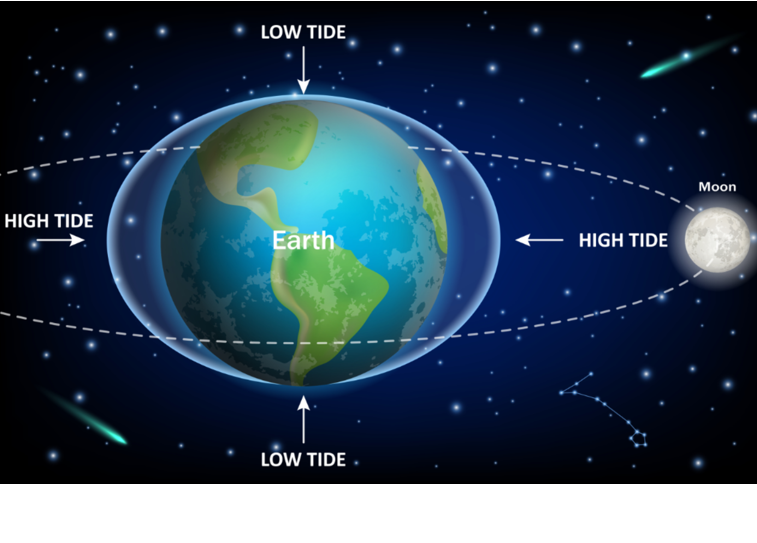- UNITS
- Unit 12 - Currents and Tides
- The Game of Words
- Prof. Xue and Luk's Conversation
- An Active Reader
- Asking Questions
- Language Knots
- Test Corner
- LEARNING

♦ This introductory exercise aims to give you a feel for the sound and rhythm of the language, whilst presenting an overview of the maritime topic at hand. ♦ By reading and then listening to the accompanying audio, you’ll discover how words are pronounced and some simple sentence structures. ♦ Once you are comfortable with how the written and spoken words are connected, you’ll be ready to focus on keywords in the next exercise.
Currents and Tides
Now we have a stable understanding of the oceans and what they are made of. But everything is in motion, in constant change, so we must understand the ocean’s motions too: currents and tides.
Currents and tides are often confused. Currents always mean the sideways flow of water around the Earth’s surface. Tides always relate to the heights of water on Earth, because of the gravitational effects of the Moon and the Sun.
Waves on the ocean are made by the winds blowing across the surface, the wind gives the surface some of its energy. Stronger winds that blow for a long time over a long distance create the biggest waves. Waves break when they become too tall, usually as they get closer to shore. The top of the wave is faster than the bottom, so the wave breaks forward. Winds can create currents too, in deep water winds make currents that might be just 1% of the wind speed. In shallow water these currents from wind can be faster, up to 10% of the wind speed.
There are many different types of currents. Surface currents can flow for thousands of kilometers; they depend on global wind patterns, the rotation of the Earth, and the shape of the ocean floor. Unlike local winds, global winds always blow in the same direction. For example, the Trade Winds blow to the west around the Equator, but the Westerlies blow the other way in the temperate latitudes. The currents will follow these wind patterns. The rotation of the Earth causes currents, this is called the Coriolis effect.
Deep currents are the other major type, these are affected by the heat and salt-content of water. If water is colder and saltier, it becomes denser. Water at the Earth’s poles becomes colder, some of it freezes, so it becomes saltier too. This colder, saltier and denser water sinks down. This downwelling water flows along the bottom of the ocean floor, and then rises where it is warmer near the equator. This upwelling water carries many deep-sea nutrients and so it helps many organisms. Finally, the warmer water is carried back by surface currents to the colder region, and it starts the process again.
Finally, longshore currents move water and sediment along the shore line, rip currents carry water quickly away from the shore, they can be very dangerous.
Tides are caused by the Moon’s gravity. The moon pulls on the Earth’s water closest to it. This creates a bump of water that travels around Earth as the moon moves around. There are two high tides and two low tides each day. The Sun’s gravity also affects the oceans, it has about half the power of the Moon’s gravity. When the Moon and the Sun are pulling in the same direction at the same time, it creates a bigger tide every two weeks - a spring tide. When they pull in opposite directions, there is a smaller tide - a neap tide.
